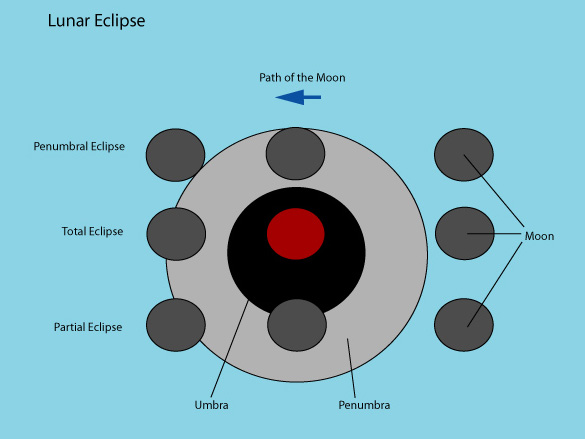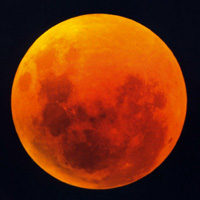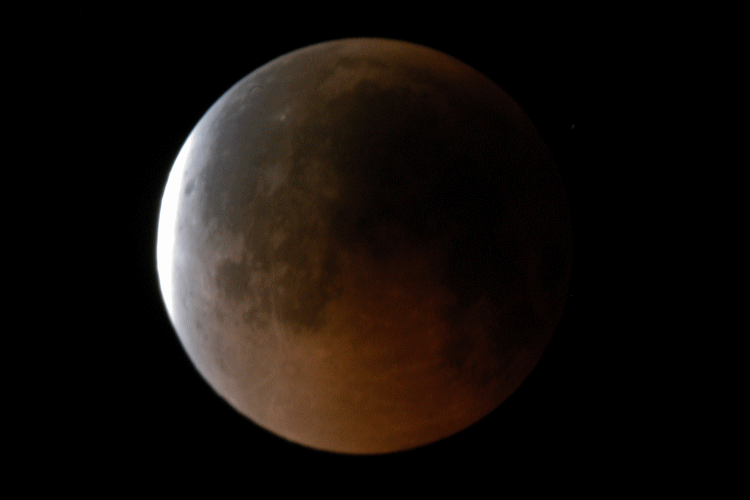|
Just like the
orbit of the
Moon influences the probability of a
Solar Eclipse, a lunar eclipse will occur if the
Earth lies between the
Sun and
Moon.
NOTE: Unlike a
Solar Eclipse,
a Lunar Eclipse can be safely viewed with the naked eye. The reason: Reflection
of sunlight is viewed, not the
Sun itself.
 |
| The diagram above demonstrates the conditions required for a lunar
eclipse. Notice the similarity between this diagram and the diagram
shown on the
Solar Eclipse page. |
There are three types of lunar eclipses: total, partial, and penumbra. The
type of eclipse is dependant on the Moon's location on the shadow of the
Earth.
 |
| The illustration above demonstrates the position of
the
Moon and its associated eclipse type. |
 |
 |
 |
| The image above is an example of a total lunar
eclipse. |
The image above is an example of a partial lunar
eclipse. |
The image above is an example of a penumbral lunar
eclipse. At first glance, this looks like a "normal" Full
Moon, but
notice it is not near as bright as a "usual" Full
Moon. |

The red color of the
Moon is somewhat startling, and reminds me of something
out of the Book of Revelations. But in reality the red color is an effect
directly resulting from light interacting from OUR
atmosphere. For the same
reason why the sky is blue during the daylight hours, blue light is readily
scattered about our
atmosphere while red light passes more easily though. The
diagram below demonstrates:
If any object were to pass though this part of the shadow, it too would also
appear a bit red.
To view upcoming lunar eclipse dates, click
here.
Back to Top |

